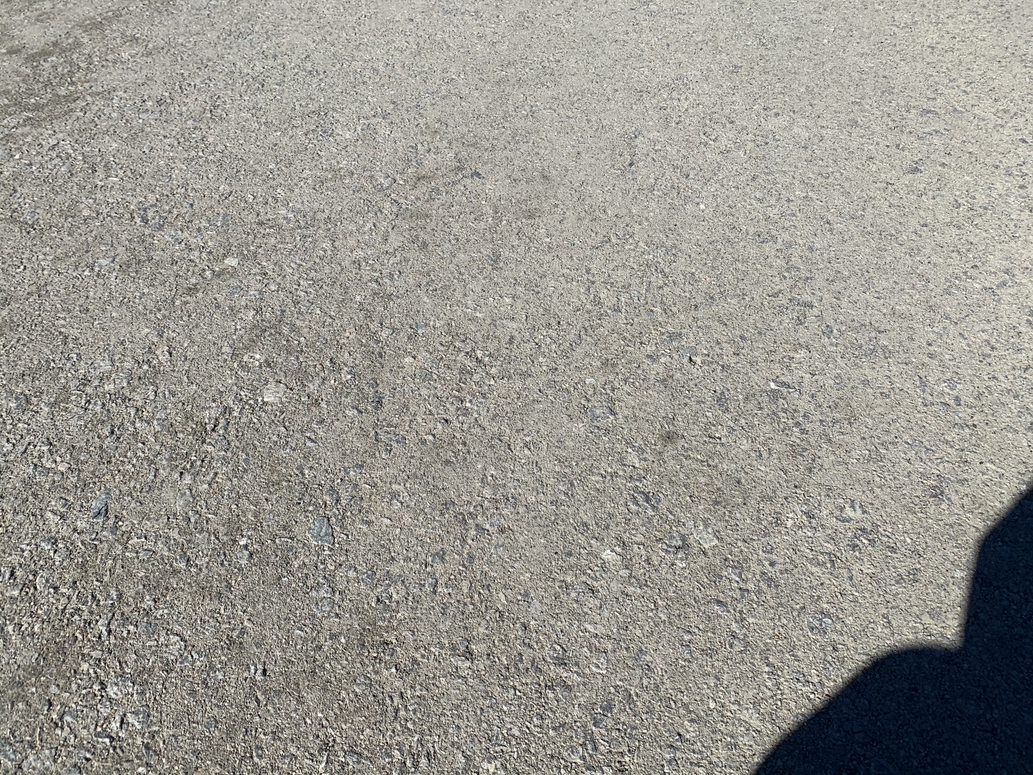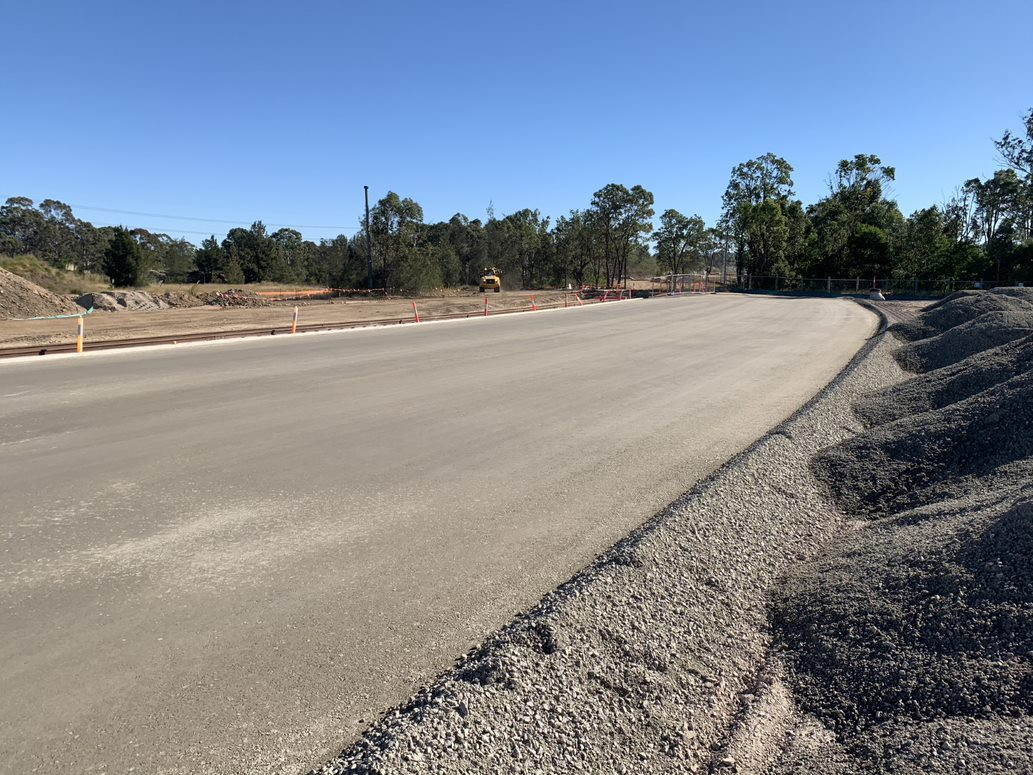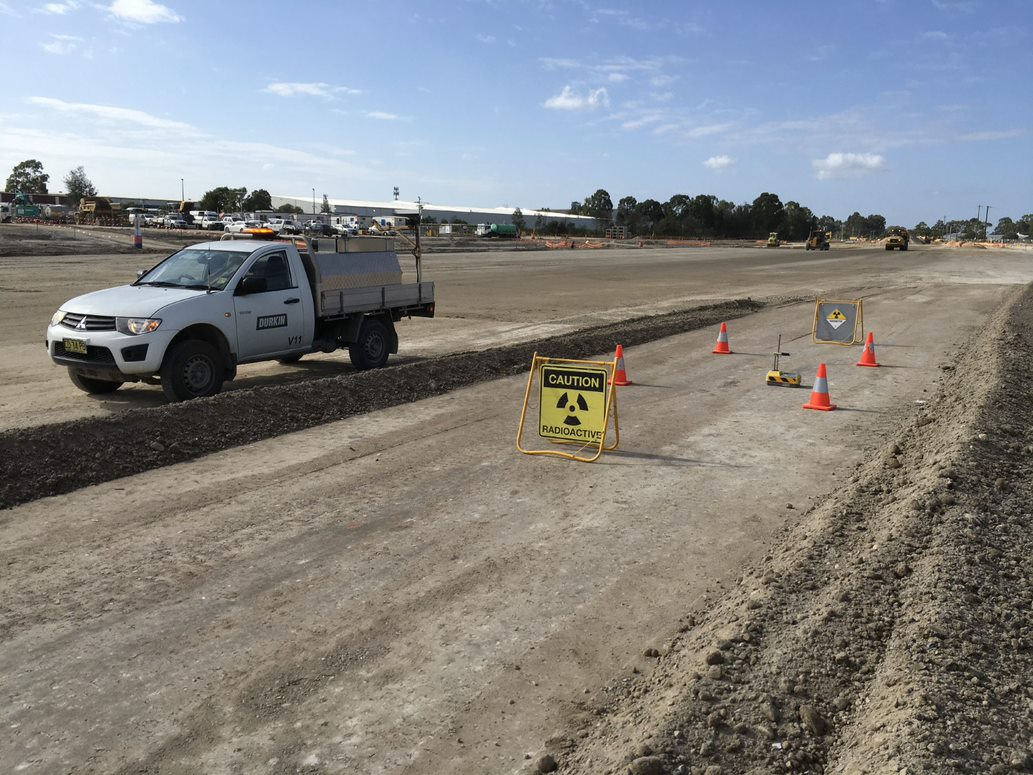St Mary’s Project: heavy-duty freight terminal pavement
As one of Australia’s leading industrial, construction and environmental service providers, McMahon Services Australia has delivered some of Australia’s most significant construction projects.
They approached Durkin Construction to work with them on the construction of a heavy-duty freight terminal pavement as part of the $40 million St Mary’s Freight Hub project in Western Sydney.
Project requirements
Part of this project included the construction of a freight terminal on a staged basis to accommodate a new dedicated port shuttle service from Port Botany to St Marys.
A key requirement of this project was maintaining the highest quality specifications. In addition, the facility had to accommodate freight forwarders and other developments at the site as well as accommodating a maximum operating capacity annually of 300,000 TEU (twenty-foot equivalent unit) through-put.
According to McMahon Services Australia Project Director, Shane Pearce, the new development forms an important link in the transfer of containers to and from Port Botany to Greater Western Sydney.
“With plans to operate the site 24/7, this new heavy-duty freight terminal pavement will see an increase in freight being transported by rail reducing the demand put on the local road network by container freight related traffic,” Shane said.
“As experts in the design and testing of roads and heavy duty pavements, we approached Durkin Construction’s Pavement Department to carry out a number of versatile pavement investigations to ensure the construction met the highest quality specifications,” he said.
As part of this project, Durkin Construction undertook several services including subsurface utility locating, geotechnical investigation, material testing, and field QA testing.
Overcoming challenges
One of the main challenges of this project was ensuring and maintaining high levels of safety protocols while onsite. In order to achieve this, the team undertook extra training on working safely around excavators and installed additional safety signage throughout the site.
There were also some initial concerns around the use of recycled subbase materials but these were overcome by undertaking extra testing in order to develop a recommended compaction plan.
Key project achievements
According to Durkin Project Manager, Sahand Baseri, this project has enabled the team to develop a strong working relationship with McMahon Services Australia.
“While there have been some challenges, on the whole we’ve been able to use these to our advantage by improving our safety systems and the team's knowledge of working with recycled materials,” he said.
“We found that by working closely with the McMahon Services Australia team, we were able to help them avoid subgrade stabilization and assist them in getting approval to use high quality recycled subbase materials for the lower base.”
“Through testing and collaboration, we were also able to increase the use of recycled materials in this project which enabled us to make significant cost savings and allowed us to implement a number of environmental benefits,” Sahand said.
As a result, the Durkin team was able to deliver the project on time despite some slight delays as a result of COVID and the use of recycled materials. In addition, they were able to keep the work budget under the schedule of rates.
Get in touch with us today to discuss how we can help you achieve similar results.







